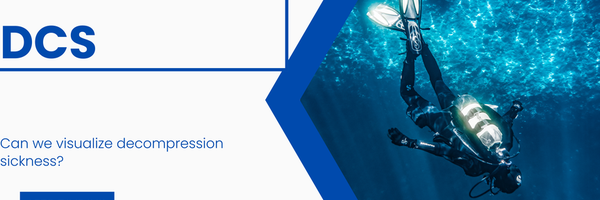Diving into DCS (A visualization)
Owen Gardiner
Grade 8
Presentation
Hypothesis
I believe that the Gel with the HIGHER rate of ascent will have more noticeable effects such as destruction and/or deformation. I also believe that the Gelo with the LOWER rate of ascension will have less effects if any.
Research
One of the only things this experiment actually solved was, how microbubbles affect our body and what actually happens to them?
This has however already been research by a outsourced company outsourced by DAN (Divers Alert Network) Which found similar results to us, the microbubbles often collect together at a epicenter and create large bubbles that then cause a medium to large tear in the tissue (Gel)
https://divemagazine.com/scuba-diving-news/dan-europe-azoth-microbubble-study
Variables
As our experiment was conducted in 2 parts we had experience controlling the variables as much as possible, HOWEVER we conducted our experiment in OPEN WATER so variables were difficult to control but we did do a decent job of making sure the experiment was highly controlled.
I can confirm that there was no tampering from outside conditions during the dive as well as during dissection.
Procedure
METHOD: (Procedure)
- Arrive on site (Cliff site minnewanka.)
- Descend after preparing Gel and gear
- After arriving at the depth (60-70 ft)
- Prepare samples one (High rate of ascension) by inserting _____milligrams of air
- Inflate buoy and launch to surface (Attached to dive buddy with rope)
- Prepare the slow samples by inserting ____miligrams of air
- Begin steady vertical ascent to avoid too much motion with sample on the surface of lake
- Take pictures on the surface.
WHAT ACTUALLY HAPPENED?
- Descended to the MAXIMUM depth of 17.7m (58 feet.)
- Rapid ascent was released (while being tied to a diver)
- Began ascent with slow ascent
- Safety stop at 5m (16 feet.)
- ACCIDENTAL Rapid ascent.
- Dissection
Observations
One of the things that I noticed about this experiment was not only did the faster ascension platform cause more damage, but the microbubbles didn't separate like one may think they actually joined together and created MORE problems than the single larger bubbles. This is abnormal due to the more spread out nature of the microbubbles.
Analysis
I believe this experiment was a complete success. I was able to meet my goal of visualizing the effects and severity of the effects of the bubbles in your bloodstream that cause DCS (Decompression Sickness) or the bends. All of the data and visuals have been given to a local dive shop (The Dive Shop)
Conclusion
Although I was unable to attend the second dive, due to a concussion, I was still able to make sure everything was going the way I wanted it to, as this is my experiment. This experiment was a LARGE success, I was able to complete my goal of understanding, and visualizing decompression sickness. Even though the first dive was inconclusive the second dive proved that DCS can be visualized, this data is being given to The Dive Shop in Calgary to help divers visualize what DCS actually does to you and better understand the consciences of an uncontrolled ascent.
Application
This experiment is designed to help people everywhere who are currently diving or learn how to dive, understand and visualize DCS
Sources Of Error
This experiment is indeed something new but everything was controlled really well although the only source of error that I can think of is only jostling and bobbing on the surface MIGHT have upset the samples but this could not have been avoided without having someone in the cold water for 20-40 minutes at least. This would have been unsafe and could have caused hypothermia. This is the reason I chose to leave everyone who was not needed out of the water for safety reasons
Citations
Our lakes are important, that was used will not affect our lakes and nothing was left behind, pack in, pack out, leave only fin kicks.
Acknowledgement
Sabrina Figliomeni
(Technical Advisor | Dive buddy #1 | Underwater Photographer)
Angelique Lavigne
(Habited Protection Specialist | Dive buddy #2)
Mellisa Gardiner
(Coordinator | Dve buddy 3#)

